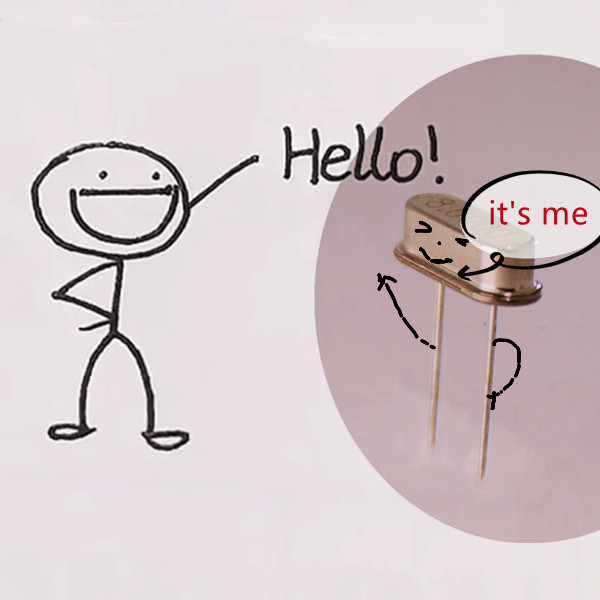Navigating Crystal Oscillator Selection: Tailoring Technology to Industry and Application Needs | Xtalong
Introduction
Crystal oscillators are crucial electronic components that generate precise and stable clock signals in various electronic systems. With an extensive range of crystal oscillator technologies available in the market, selecting the right one for a specific industry or application can be a challenging task. This article aims to provide insights into navigating crystal oscillator selection by understanding the different technologies and tailoring them to meet industry and application needs.
Understanding Crystal Oscillator Technologies
Quartz Crystal Oscillators (XO)
Quartz crystal oscillators are widely used due to their excellent frequency stability and low phase noise characteristics. They operate based on the piezoelectric properties of quartz crystals, which vibrate at a precise frequency when an electric field is applied. XO technology is suitable for applications that require high accuracy and stability, such as telecommunications, aerospace, and scientific instruments.
Temperature-Compensated Crystal Oscillators (TCXO)
TCXOs are designed to provide enhanced frequency stability over a wide temperature range. They incorporate compensation circuitry that counteracts the frequency variations caused by temperature changes. TCXOs are commonly used in applications where temperature fluctuations are significant, such as mobile communication devices, GPS systems, and military equipment.
Oven-Controlled Crystal Oscillators (OCXO)
OCXOs offer exceptional frequency stability by maintaining a stable temperature environment around the crystal. These oscillators employ a heating element and a temperature control circuit to keep the crystal at a constant temperature. OCXOs find applications in precision instruments, satellite communication systems, and scientific research where superior frequency stability is critical.
Voltage-Controlled Crystal Oscillators (VCXO)
VCXOs provide frequency modulation capabilities by varying the control voltage applied to the crystal. They are commonly used in applications such as phase-locked loops (PLLs), telecommunications, and data communication systems. VCXOs offer flexibility in adjusting the output frequency to compensate for system variations or to implement frequency synthesis.
Surface Acoustic Wave Oscillators (SAWO)
SAWOs employ surface acoustic wave technology to generate stable clock signals. They offer excellent frequency stability and low phase noise performance. SAWOs find applications in wireless communication systems, radars, and high-precision instrumentation.
Tailoring Crystal Oscillators to Industry and Application Needs
Determine Frequency Requirements
Identify the required frequency range and stability for your application. High-precision applications, such as scientific instruments, may demand OCXOs or TCXOs for superior stability, while applications with lower stability requirements, such as consumer electronics, might benefit from XO or VCXO solutions.
Consider Temperature Range
If your application operates in extreme temperature environments, select crystal oscillators specifically designed to handle the temperature range effectively. TCXOs or OCXOs are suitable choices for applications exposed to wide temperature variations.
Evaluate Power Consumption
Different crystal oscillator technologies have varying power consumption characteristics. Consider the power budget and select oscillators that align with your application's power requirements. Low-power options, such as XO or VCXO, can be preferred for battery-operated devices.
Assess Phase Noise
Phase noise is crucial for applications sensitive to signal purity, such as wireless communication systems or radars. Choose oscillators with low phase noise performance, such as SAWOs or TCXOs, to ensure minimal interference and optimal signal integrity.
Size and Form Factor
Consider the physical space available for the oscillator and select a technology that fits within the size constraints. Smaller form factors like XO or VCXO are suitable for compact devices, while larger form factors may be required for OCXOs or SAWOs.
Cost Considerations
Evaluate the budgetary constraints of your project and balance the required performance with the cost of the crystal oscillator technology. XO and VCXO technologies are generally more cost-effective compared to TCXOs or OCXOs.
Conclusion
Navigating the selection of crystal oscillators requires a comprehensive understanding of the available technologies and their suitability for specific industry and application needs. By considering factors such as frequency requirements, temperature range, power consumption, phase noise, size, and cost, engineers and designers can make informed decisions to ensure optimal performance and reliability in their electronic systems. Selecting the right crystal oscillator technology is crucial for achieving accurate timing, stable signals, and overall system functionality.

